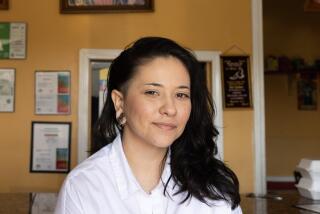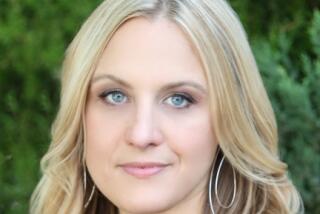Baby Boomers Renew Religious Ties, Study Says
- Share via
WASHINGTON — The young adults who made a mass exodus from America’s churches and synagogues during the 1960s and 1970s are now coming back in droves, a new study released here Sunday concludes.
Researchers from Hartford Seminary in Connecticut presented findings showing a 9% increase in regular church attendance over a 10-year period among older members of the so-called “baby boom” generation, which they defined as those born between 1945 and 1954.
Based on estimates that there are 40 million Americans in that age range, nearly 4 million of them who did not go to church regularly 10 years ago are now going more frequently.
Over the same period, the national survey showed, regular worship patterns by the adult population as a whole declined by about 1%.
43% Attend Services
“Regular participation” was defined as attending religious services three or more times a month. While about one-third of the baby-boom-age sample attended regularly in the early 1970s, 43% did a decade later.
“It seems clear,” said study director David A. Roozen of Hartford Seminary’s Center for Social and Religious Research, “that the ‘Big Chill Generation’ is warming to worship.”
The study used comparative data from the National Opinion Research Center of Chicago surveying about 1,100 “older baby boomers” for the years 1972-1974, and 1982-1984. The analysis was presented at the annual meeting here of the Society for the Scientific Study of Religion, and the Religious Research Assn., the nation’s two largest groups of social scientists of religion and denominational researchers.
The Hartford researchers cited changes in family status and the nation’s increasingly conservative political climate as the major reasons why baby boomers returned to more active church and synagogue life.
“Without these changes,” Roozen said, “we would be looking at religious participation rates virtually unchanged from those of a decade ago. With them, we are witnessing a resurgence of religious involvement as many of the prodigal sons and daughters of the 1960s return to more active participation in their religious homes.”
According to the study, regular religious participation by baby boomer parents who are now between the ages of 32 and 41 and have preschool children, rose from 35% to 43%. It increased from 43% to 48% for parents of children aged 6 to 18 during the same 10-year span. But there was virtually no change in religious participation for never-married baby boomers.
“The birth of a child was the most significant reason” baby boomer parents who dropped out of church in the early 1970s gave for reactivating their church life a decade later, said Robert Gribbon of the Alban Institute, an interfaith Washington-based group that studies congregational life.
Regular religious participation by the increasing numbers of baby boomers who identified themselves as political conservatives jumped 10%--from 29% to 39%--over the decade. At the same time, participation of baby boomer liberals dropped from 30% to 26%, the survey showed.
Liberal Attitudes Retained
But while the boomers turned more conservative on political and economic issues, Roozen said, they have retained the liberal attitudes of the so-called “new morality” of the 1960s’ counter-culture on sexual and life-style matters.
Wayne Thompson, a staff sociologist for the Presbyterian Church who participated in the Hartford study, said the increase in baby boomer religious involvement appears to cut across denominational lines rather than to be confined to churches closely identified with the “New Christian Right.”
“Catholics, mainline, black and conservative Protestants, and Jews born in the post-war years are all participating more actively in organized religion than they were a decade ago,” Thompson said.
The largest increase was for black Protestant baby boomers--up 12% from 1972-1974.
Regular worship rates for 1982-1984, according to the survey, are: conservative Protestants, 59%; Catholics, 53%; black Protestants, 48%; liberal Protestants, 40%; moderate Protestants, 35%, and Jews, 9%. Nine denominational “family categories” were used in the analysis.
The research panel noted that while regular worship participation is up for persons in the 32- to 41-age category, attendance is not matched by a rise in church membership.
“They are simply coming (to church) more often,” said Mary Paula Walsh, a researcher from Gettysburg Lutheran Seminary in Pennsylvania.
“We are still looking at the most unchurched generation of the century,” added William McKinney, a study participant and director of educational programs at Hartford Seminary. “The hard times experienced by churches and synagogues in the ‘60s and ‘70s came in large part from their inability to hold the children who created the boom of the ‘50s. Now some are returning, but the number who remain outside looking in remains enormous.”
More to Read
Sign up for Essential California
The most important California stories and recommendations in your inbox every morning.
You may occasionally receive promotional content from the Los Angeles Times.













